|
|
|
Today money comes in paper bills and metal coin. Long ago, before 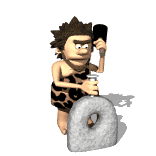 people had coins and bills, they still needed to use something to buy things with. If you were a caveman with lots of food, but you needed a hammer to make things with, what could you use for money? You might make a hammer yourself, or you might trade some tasty dinosaur meat with another caveperson who had extra hammers. people had coins and bills, they still needed to use something to buy things with. If you were a caveman with lots of food, but you needed a hammer to make things with, what could you use for money? You might make a hammer yourself, or you might trade some tasty dinosaur meat with another caveperson who had extra hammers.
This is what money is all about, trading one thing of value for something else of value.
Money started out in cities. Mesopotamia was one of the first cities, built about 5000 years ago. Mesopotamians used cattle, grains, and valuable metals like gold and silver for money. This "money" was kept in fancy buildings with guards. Today, we know of these places as credit unions and banks. gold and silver for money. This "money" was kept in fancy buildings with guards. Today, we know of these places as credit unions and banks.
Today when you need to pay for something, you open your wallet or purse and take your money out. Just think what it was like back in ancient times.
|
How would you get a cow in your wallet, purse or pocket?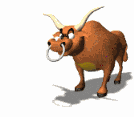 That's why people started to use coins made of precious metals for money. Coins fit in their pocket a whole lot better! That's why people started to use coins made of precious metals for money. Coins fit in their pocket a whole lot better!
The word "precious" can mean: "Of high cost or worth; valuable." For something to be considered precious, it has to be hard to find and have a sparkle to it. A pretty rock would not do since it is easily found. But gold and silver were hard to find, easy to carry and shimmered in the sun, and therefore became commonly used as money.
Even in ancient times, there were dishonest people who tried to use fake gold and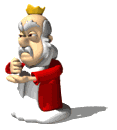 silver for money. So some kings got tough and began guaranteeing that their gold and silver ingots (silver melted down and made into bars) were real and that they weighed what was stamped on the ingot. By doing this, the kings were creating money, and people could count on its value. silver for money. So some kings got tough and began guaranteeing that their gold and silver ingots (silver melted down and made into bars) were real and that they weighed what was stamped on the ingot. By doing this, the kings were creating money, and people could count on its value.
|
|
|
|
|
Around 700 B.C. the Lydians became one of the first people 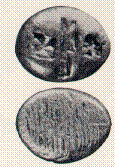 to use coins. The Lydians liked coins because they were made from precious metals, were durable, easy to carry, and had the same value. Coins made it so easy to buy things that they became especially popular throughout Europe as trading grew. to use coins. The Lydians liked coins because they were made from precious metals, were durable, easy to carry, and had the same value. Coins made it so easy to buy things that they became especially popular throughout Europe as trading grew.
One of the most widely used coins was the Spanish 8-reale. It was often split into pieces or bits to make change. Half a coin was 4 bits and a quarter was 2 bits. Now you know why a quarter is sometimes referred to as 2 bits!
Although coins made it easy to buy things, it was hard to carry enough coins when you needed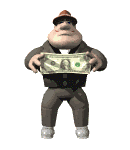 to buy something expensive. Also people with lots of money did not know what to do with all their coins! To eliminate these problems, paper money was created. to buy something expensive. Also people with lots of money did not know what to do with all their coins! To eliminate these problems, paper money was created.
|
The Chinese were the first to use paper money, beginning in the T'ang Dynasty (618-907 A.D.). Early paper money could generally be exchanged with the government for something that was considered to be valuable, such as gold and silver. In the 1700s, some states in the United States even had paper money that could be exchanged for tobacco. such as gold and silver. In the 1700s, some states in the United States even had paper money that could be exchanged for tobacco.
Today, paper currency cannot be exchanged with the government for anything. So how can money  that is made from paper be so valuable? Why does putting a 100 on a paper bill make it worth 100 dollars? that is made from paper be so valuable? Why does putting a 100 on a paper bill make it worth 100 dollars?
It all comes down to what people believe it is worth. The government of each country is responsible for controlling how much money is made and making sure that people can count on it being worth what it states on the bill. 
See what you learned.
Check out "What's the Fed anyway?"
|
|
  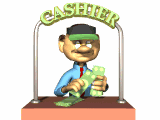  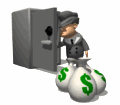     
|
Did this answer your question?